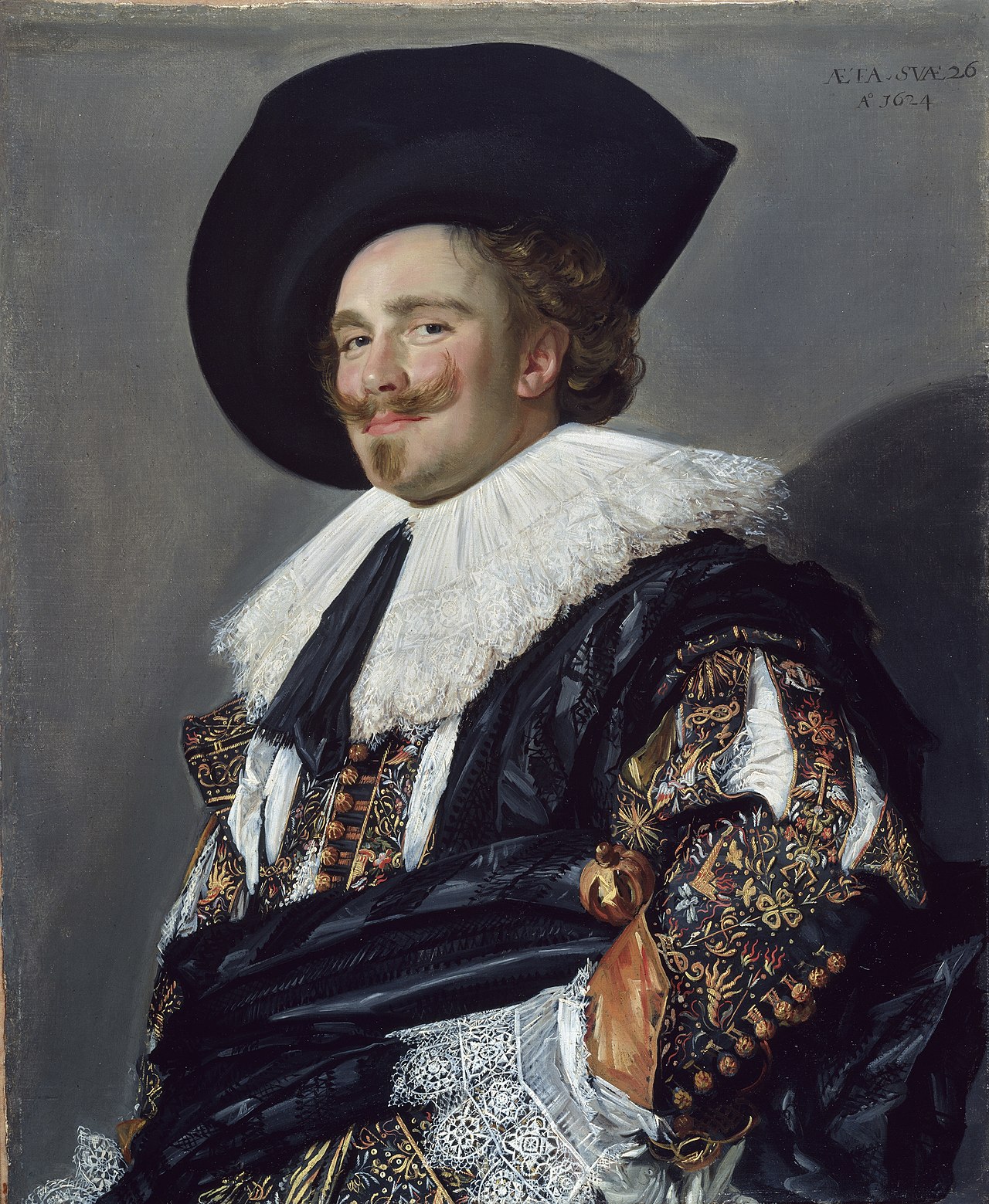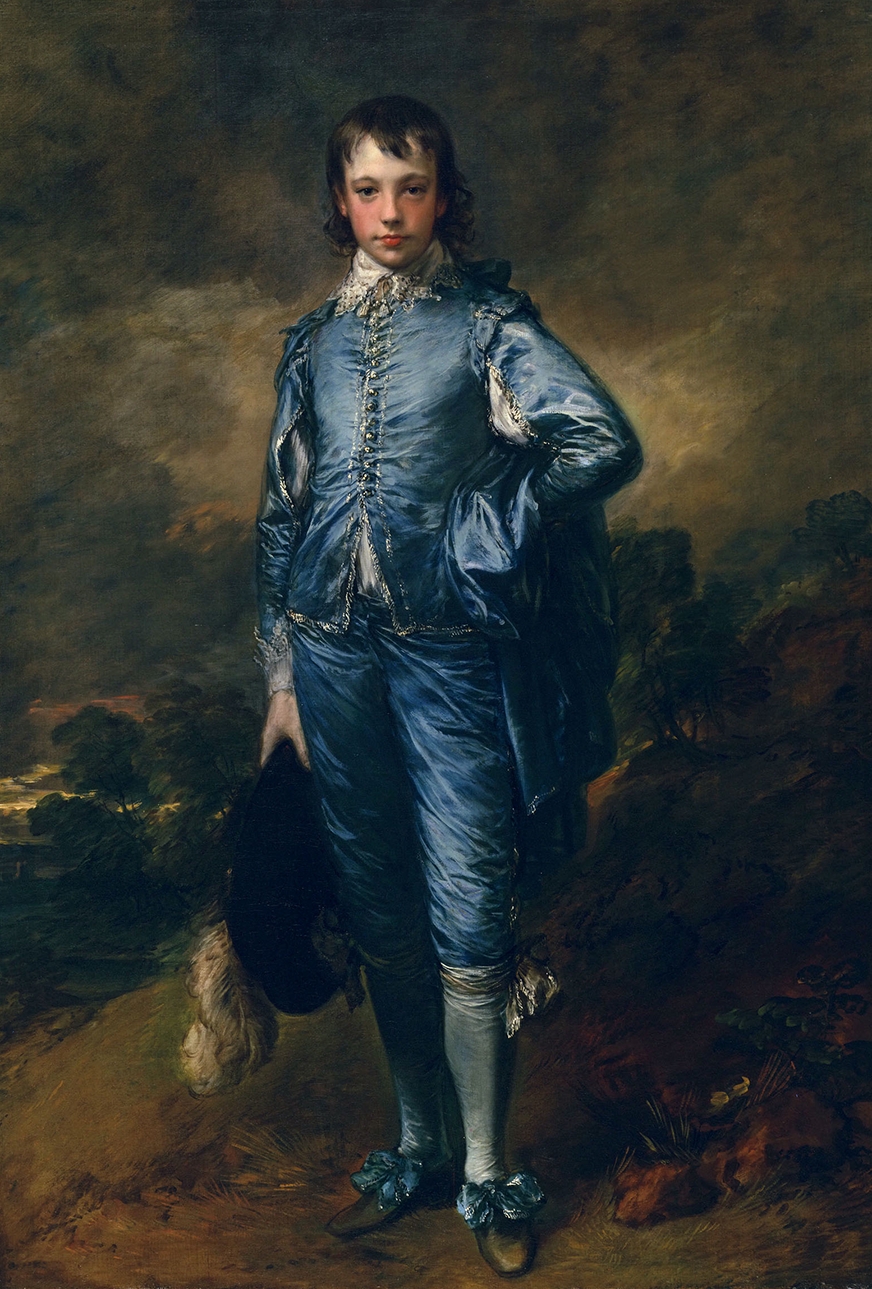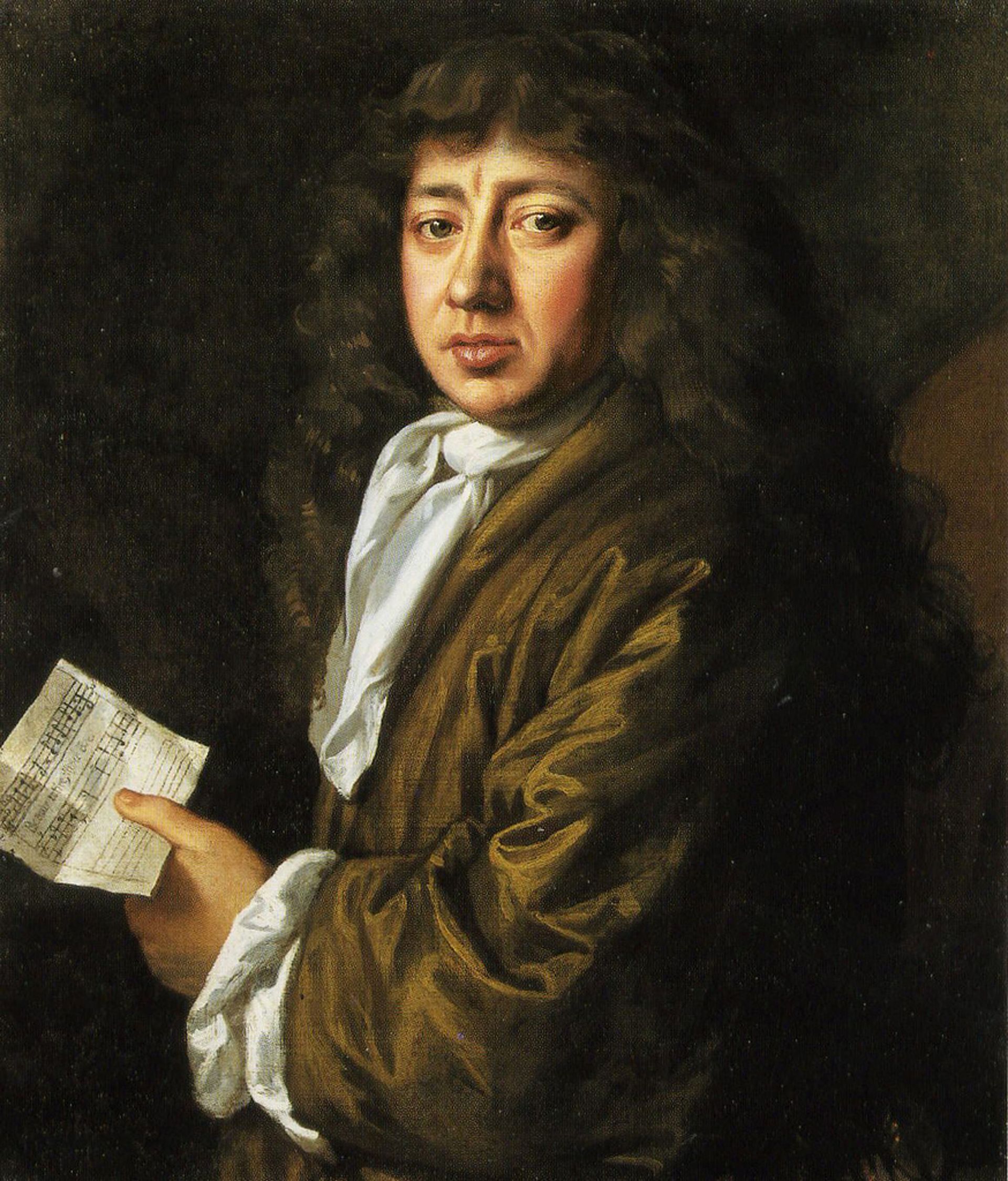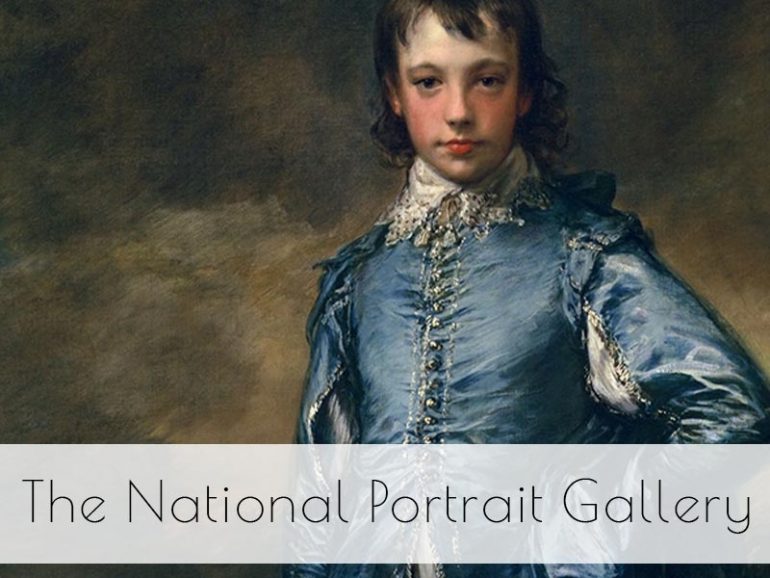Nestled in the heart of London, the National Portrait Gallery houses an incredible array of portraits of kings, queens and people of notoriety, spanning centuries of history. Established in 1856, the gallery holds the distinction of being the first dedicated ‘portrait gallery’ in the world. It’s inception can be traced back to the historian and conservationist Thomas Carlyle and the portrait painter Sir George Scharf. Together, they sought to create a space dedicated to showcasing the diverse array of personalities that have left a mark on British culture. Visitors can immerse themselves in an array of artistic styles and mediums, ranging from classical oil paintings to contemporary photography. Among the gallery’s most notable holdings are the four stunning paintings which we have set out for you below.
“Chandos Portrait” of William Shakespeare Artist: Possibly John Taylor.
The “Chandos Portrait” of William Shakespeare stands as one of the most iconic and enigmatic depictions of the world’s most celebrated playwright. Created in the early 17th century, this oil painting is attributed to artist John Taylor and is named after the Duke of Chandos, who once owned it. This portrait has fascinated scholars and art enthusiasts for centuries, not only for its historical significance but also for the mystery shrouding its subject.
In the painting, Shakespeare is portrayed with an air of confidence and contemplation, his penetrating gaze seeming to penetrate the very soul of the viewer. Dressed in attire befitting his era, he appears both dignified and approachable, with his signature receding hairline and prominent brow adding to his distinctive features. The artist’s skill is evident in the intricate details of Shakespeare’s face and clothing, capturing nuances of expression and texture with remarkable precision.
What sets the “Chandos Portrait” apart is not just its artistic merit but also its significance in the realm of Shakespearean scholarship. While there is widespread acceptance of its association with the Bard, the exact likeness of Shakespeare has been a subject of debate. Some scholars argue that it offers valuable insights into Shakespeare’s appearance, while others contend that it might be a posthumous rendering based on written descriptions or even a composite representation.
Despite the uncertainties surrounding its origins and authenticity, the “Chandos Portrait” continues to captivate audiences, serving as a tangible link to the literary genius whose works have left an indelible mark on human culture. Whether it provides an accurate portrayal of Shakespeare or not, this painting serves as a testament to his enduring legacy, inviting us to ponder the mysteries of his life and the timeless allure of his artistry. As visitors stand before the “Chandos Portrait,” they are transported back in time, encountering the enigmatic figure of William Shakespeare and the profound impact of his words on the world stage.
We have added the full portrait and a very interesting YouTube video on the mystery of the painting.

“The Laughing Cavalier” Artist: Frans Hals
The Laughing Cavalier” by Frans Hals is an exquisite masterpiece that captures the essence of joy and vitality in a single moment frozen in time. Painted in the 17th century, this oil portrait showcases the Dutch Golden Age artist’s remarkable talent for capturing the spirit and character of his subjects. The painting has earned widespread acclaim for its dynamic composition and the infectious charm of its central figure.
At the heart of the painting stands the titular laughing cavalier, his larger-than-life presence dominating the canvas with an irresistible magnetism. Dressed in opulent attire typical of the aristocracy of the time, he exudes an air of confidence and mirth, his eyes twinkling with mischief and his lips curled into a mischievous grin. Hals’ masterful brushwork imbues the cavalier’s face with a sense of vitality and warmth, capturing the fleeting nuances of expression with remarkable dexterity.
The background of the painting is rendered in Hals’ signature loose and fluid style, with bold brushstrokes that lend a sense of movement and spontaneity to the scene. Despite the cavalier’s flamboyant appearance, there is an underlying sense of depth and complexity to his character, hinting at a life filled with adventure and intrigue.
What sets “The Laughing Cavalier” apart is not just its technical brilliance but also its ability to evoke a visceral response from viewers. The cavalier’s infectious laughter seems to reverberate through the centuries, inviting us to share in his joie de vivre and embrace the simple pleasures of life.
As visitors stand before this timeless masterpiece, they are transported back to a bygone era, encountering the irrepressible spirit of the laughing cavalier and revelling in the enduring beauty of Frans Hals’ artistry. We have added the full painting along with a YouTube video about the painting which is a much watch.

“The Blue Boy” by Thomas Gainsborough 1770 Oil on Canvas
“The Blue Boy” is one of the most iconic and beloved portraits in the National Portrait Gallery’s collection. Painted by the renowned English artist Thomas Gainsborough, this masterpiece showcases his exceptional talent for capturing both the physical likeness and the inner essence of his subjects.
The painting depicts a young boy dressed in an elaborate blue satin costume, his gaze direct and confident. Against a neutral background, the vibrant blue of his attire commands attention, imbuing the portrait with a sense of richness and opulence. The boy’s pose is relaxed yet dignified, hinting at a self-assuredness beyond his years.
What makes “The Blue Boy” truly remarkable is its combination of technical skill and emotional depth. Gainsborough’s mastery of color and composition is evident in every brushstroke, from the delicate rendering of the fabric to the subtle play of light and shadow. Yet beyond its visual appeal, the portrait also conveys a sense of youthful vitality and possibility, inviting viewers to ponder the mysteries of childhood and the passage of time.
Despite its age, “The Blue Boy” continues to captivate audiences today, serving as a timeless reminder of the enduring power of art to transcend the boundaries of time and space. As visitors gaze upon this iconic portrait in the halls of the National Portrait Gallery, they are not merely observing a work of art, but experiencing a moment of connection with the past—a testament to the universal language of creativity and human expression.

“Samuel Pepys” by John Hayls 1666 Oil on Canvas
“Samuel Pepys,” an oil painting by the renowned English portrait artist John Hayls, graces the halls of the National Portrait Gallery with a captivating presence. Executed in the 17th century, this masterpiece offers a glimpse into the life and persona of one of Britain’s most notable historical figures. Pepys, a celebrated diarist and naval administrator, is depicted with an air of distinction and intellect, his gaze piercing through the canvas with a sense of purpose and introspection.
Hayls’ brushwork in the painting is nothing short of masterful, capturing Pepys’ features with remarkable precision and detail. The play of light and shadow adds depth to the composition, casting a subtle chiaroscuro effect that lends an air of drama to the scene. Every brushstroke seems deliberate, every contour meticulously rendered, resulting in a portrait that exudes both realism and timeless elegance.
In this portrayal, Pepys is depicted in attire befitting his station, his garments rich with texture and color, hinting at his status and influence in the society of his time. Yet, amidst the trappings of wealth and power, there is an unmistakable sense of humanity in his expression—a glimpse into the inner workings of a man who navigated the complexities of life with wit, charm, and a keen intellect.
As viewers stand before the painting of Samuel Pepys, they are invited to delve into the rich tapestry of history, to contemplate the legacy of a man whose diaries provide an invaluable insight into the tumultuous era in which he lived. Through Hayls’ deft hand and keen eye, Pepys is immortalized on canvas, his essence preserved for posterity in the hallowed halls of the National Portrait Gallery, a testament to his enduring significance in the annals of British history.
Each of these standout pieces offers a unique glimpse into the diverse tapestry of human experience, inviting viewers to ponder the complexities of identity, legacy, and the enduring power of art. As visitors wander through the hallowed halls of the National Portrait Gallery, they are not merely spectators, but participants in a timeless dialogue between past and present, where every portrait tells a story waiting to be discovered.

If you would like to receive a roundup of all of our blog posts once a week to keep you inspired in your inbox, why not sign up to our newsletter. You can access our sign up at the top of our page. If you are a London Art College student and you would like your artwork featured here, drop us a line at any time.

